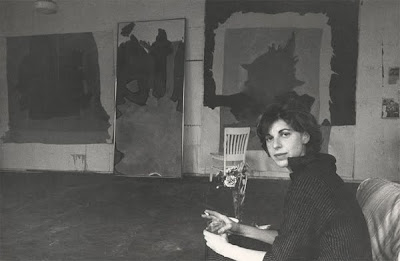
Being with Hexagonal Mirror makes me appreciate the eye of the fly- if you were to push the thing in from behind that's what you would get, one giant insect eye. In this case I am the insect, seeing the world around me in thousands of tiny mirrors.
I see all these pieces of me separated from each other. In one mirror is my mouth and there it is again and again, dozens of my mouths in little seperated compartments populate one area of the mirror.
Even more wonderful than my closed mouth in forty mirrors is the echo I get when I stand in the sweet spot. It vibrates off the walls of the Hexagonal Mirror. So I stand within the tiny reflected pieces of me and make the biggest noises I can make. The noises get bigger than I can make them because they bounce off the walls. I am made bigger and smaller in this place, and everything about me is multiplied.
LaValle is right about entering a new world, this piece of art is a world with it's very own version of every person that enters it. It has it's own silent sound system just waiting to be turned on, the only thing about it that reminds me of the world I know is that it looks like a fly eye, and really, what is more amazing than that?
LaValle is right about entering a new world, this piece of art is a world with it's very own version of every person that enters it. It has it's own silent sound system just waiting to be turned on, the only thing about it that reminds me of the world I know is that it looks like a fly eye, and really, what is more amazing than that?



















































